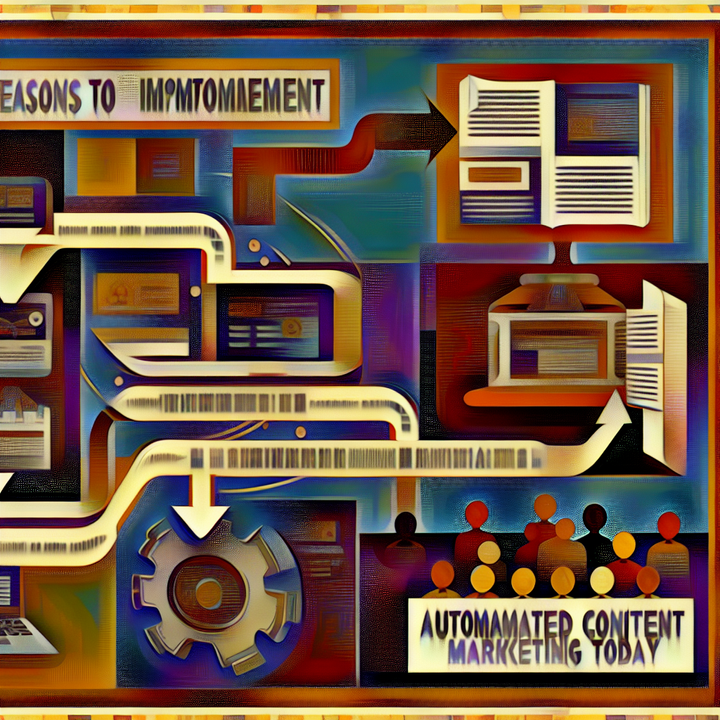Content Planning: Laying the Foundation for Impactful Content Marketing

Introduction
In the ever-evolving digital landscape, content marketing has become a crucial component of any successful business strategy. However, creating impactful content is not a simple task. It requires a well-thought-out plan that aligns with your business objectives and resonates with your target audience. This blog post will guide you through the process of content planning, helping you lay the foundation for a content marketing strategy that delivers tangible results.
Understanding Your Audience
The foundation of any effective content marketing strategy begins with a deep understanding of your target audience. By defining your audience and conducting thorough research, you can create content that truly speaks to their needs, pain points, and interests.
Defining Your Target Audience
Start by identifying the specific demographics, psychographics, and behaviors of your ideal customers. Consider factors such as age, gender, location, income, interests, and pain points. This information will help you create buyer personas, which are semi-fictional representations of your target audience.
Conducting Audience Research
Gather data from various sources, including market research, customer surveys, social media analytics, and website analytics. This information will provide valuable insights into your audience's preferences, content consumption habits, and the challenges they face. Use these insights to refine your buyer personas and tailor your content accordingly.
Setting Content Marketing Goals
Aligning your content marketing goals with your overall business objectives is crucial for ensuring the success of your efforts. By establishing SMART (Specific, Measurable, Achievable, Relevant, Time-bound) goals, you can create a clear roadmap for your content marketing strategy and measure its impact.
Aligning Goals with Business Objectives
Consider your business's overarching goals, such as increasing brand awareness, generating leads, driving sales, or improving customer retention. Translate these high-level objectives into specific content marketing goals that support your overall strategy.
Establishing SMART Goals
Ensure that your content marketing goals are SMART, making them more tangible and actionable. For example, "Increase website traffic by 20% within the next 6 months" or "Generate 50 qualified leads from our content marketing efforts by the end of the quarter."
Prioritizing Goals Based on Impact and Feasibility
Not all goals are created equal. Evaluate the potential impact and feasibility of each goal, and prioritize the ones that are most likely to drive the desired results. This will help you allocate your resources effectively and focus on the most impactful initiatives.
Developing a Content Strategy
With a clear understanding of your audience and well-defined goals, you can now begin to develop a comprehensive content strategy. This involves identifying key content themes and topics, mapping content to the buyer's journey, and determining the most effective content formats and channels.
Identifying Key Content Themes and Topics
Conduct keyword research, analyze industry trends, and gather insights from your audience to identify the topics and themes that are most relevant and valuable to your target customers. This will ensure that your content addresses their pain points and provides genuine value.
Mapping Content to the Buyer's Journey
Understand the different stages of the buyer's journey, from awareness to consideration to decision, and create content that supports your audience at each stage. This will help guide your prospects through the sales funnel and nurture them towards conversion.
Determining Content Formats and Channels
Evaluate the content formats that resonate best with your audience, such as blog posts, videos, infographics, podcasts, or social media updates. Additionally, identify the channels where your target audience is most active, ensuring that your content is distributed through the right platforms.
Establishing a Content Calendar
Develop a content calendar that outlines the publication schedule, content themes, and distribution channels for your content. This will help you maintain a consistent and organized approach to your content marketing efforts.
Content Creation and Optimization
With your content strategy in place, it's time to focus on creating high-quality, valuable content that captivates your audience and drives the desired outcomes.
Crafting Compelling and Valuable Content
Ensure that your content is informative, engaging, and relevant to your target audience. Utilize storytelling techniques, incorporate data and statistics, and address your audience's pain points and questions.
Optimizing Content for Search Engine Visibility
Optimize your content for search engines by incorporating relevant keywords, meta tags, and descriptions. This will improve your website's visibility in search engine results and increase the likelihood of your content being discovered by your target audience.
Incorporating Multimedia Elements
Enhance your content with visually appealing and interactive elements, such as images, videos, infographics, or audio clips. These multimedia components can help break up text, make your content more engaging, and improve retention.
Ensuring Content Consistency and Quality
Maintain a consistent tone, style, and brand voice across all your content. Establish content guidelines and review processes to ensure that your content meets the highest standards of quality and aligns with your brand's identity.
Content Distribution and Promotion
Effective content distribution and promotion are crucial for ensuring that your content reaches the right audience and drives the desired actions.
Leveraging Owned, Earned, and Paid Media Channels
Utilize a combination of owned media (your website, blog, email list), earned media (guest posts, influencer collaborations, media mentions), and paid media (social media ads, search engine advertising) to amplify the reach and impact of your content.
Engaging with Your Audience Through Social Media
Actively engage with your audience on social media platforms, such as LinkedIn, Twitter, or Instagram. Share your content, respond to comments, and participate in relevant discussions to build relationships and foster a sense of community.
Exploring Influencer Partnerships and Guest Posting Opportunities
Collaborate with industry influencers or thought leaders to leverage their existing audience and credibility. Guest post on relevant industry blogs or websites to expand your reach and establish your brand as a trusted authority.
Measuring and Analyzing Content Performance
Continuously monitoring and analyzing the performance of your content is essential for refining your content marketing strategy and achieving your desired goals.
Defining Key Performance Indicators (KPIs)
Identify the key performance indicators (KPIs) that align with your content marketing goals, such as website traffic, engagement metrics, lead generation, or sales conversions. These metrics will help you measure the effectiveness of your content and make data-driven decisions.
Tracking and Analyzing Content Metrics
Utilize web analytics tools, social media analytics, and other relevant data sources to track and analyze the performance of your content. Identify the content pieces that are resonating with your audience, as well as those that may need improvement.
Iterating and Refining the Content Plan
Based on the insights gathered from your content performance analysis, make adjustments to your content plan. Refine your content themes, formats, and distribution channels to better align with your audience's preferences and your business objectives.
Conclusion
Effective content planning is the foundation for a successful content marketing strategy. By understanding your audience, setting clear goals, developing a comprehensive content strategy, creating high-quality content, and continuously measuring and optimizing your efforts, you can position your brand as a trusted authority and drive tangible results for your business.
Remember, content planning is an ongoing process that requires flexibility and adaptability. Stay attuned to your audience's evolving needs, industry trends, and emerging best practices to ensure that your content marketing efforts remain impactful and relevant over time.



